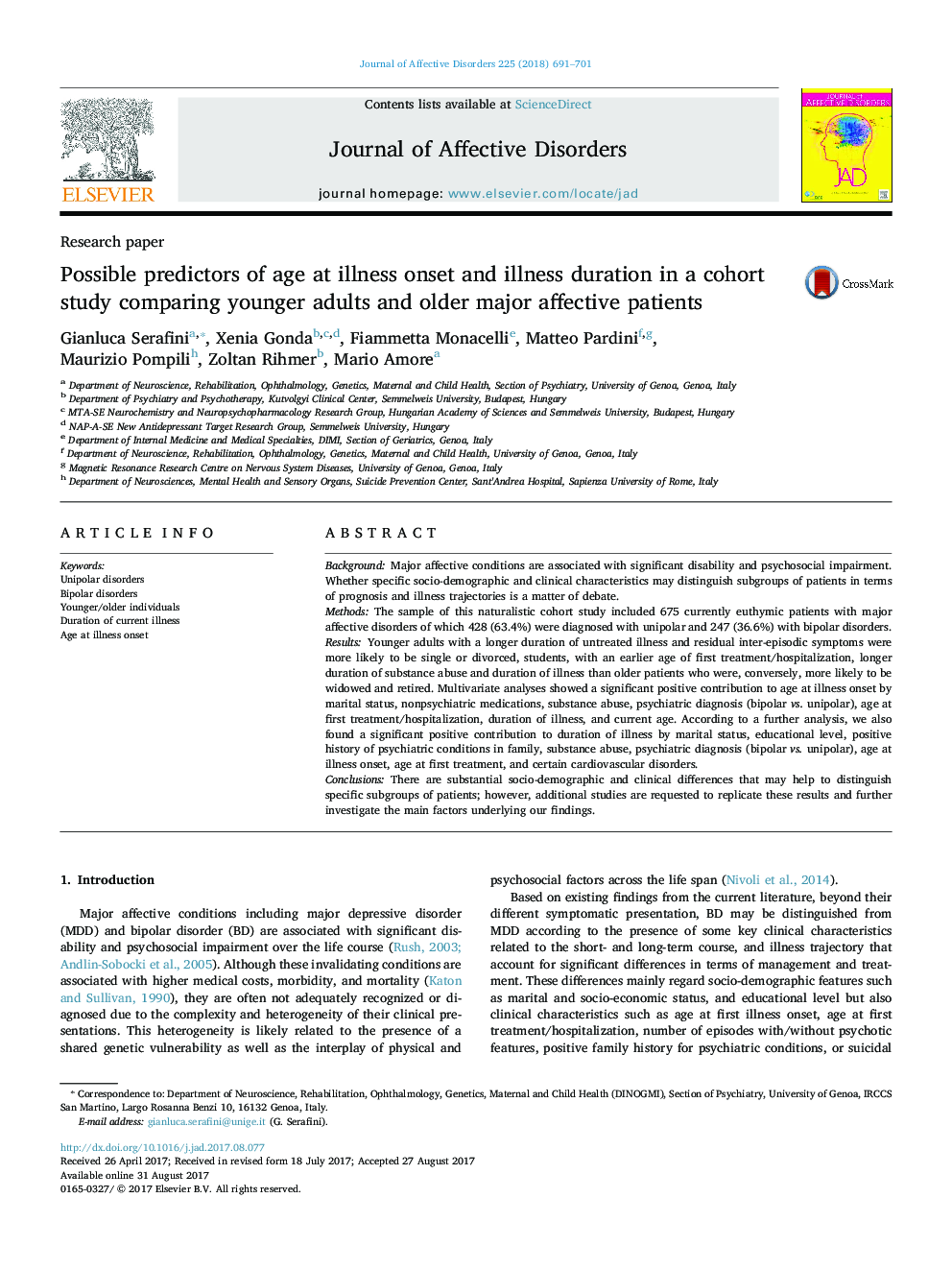| Article ID | Journal | Published Year | Pages | File Type |
|---|---|---|---|---|
| 5721778 | Journal of Affective Disorders | 2018 | 11 Pages |
â¢Major affective disorders are associated with significant psychosocial impairment;â¢Younger adults differ from older patients according to specific characteristics;â¢Substantial clinical differences may help to characterize patients subgroups.
BackgroundMajor affective conditions are associated with significant disability and psychosocial impairment. Whether specific socio-demographic and clinical characteristics may distinguish subgroups of patients in terms of prognosis and illness trajectories is a matter of debate.MethodsThe sample of this naturalistic cohort study included 675 currently euthymic patients with major affective disorders of which 428 (63.4%) were diagnosed with unipolar and 247 (36.6%) with bipolar disorders.ResultsYounger adults with a longer duration of untreated illness and residual inter-episodic symptoms were more likely to be single or divorced, students, with an earlier age of first treatment/hospitalization, longer duration of substance abuse and duration of illness than older patients who were, conversely, more likely to be widowed and retired. Multivariate analyses showed a significant positive contribution to age at illness onset by marital status, nonpsychiatric medications, substance abuse, psychiatric diagnosis (bipolar vs. unipolar), age at first treatment/hospitalization, duration of illness, and current age. According to a further analysis, we also found a significant positive contribution to duration of illness by marital status, educational level, positive history of psychiatric conditions in family, substance abuse, psychiatric diagnosis (bipolar vs. unipolar), age at illness onset, age at first treatment, and certain cardiovascular disorders.ConclusionsThere are substantial socio-demographic and clinical differences that may help to distinguish specific subgroups of patients; however, additional studies are requested to replicate these results and further investigate the main factors underlying our findings.
